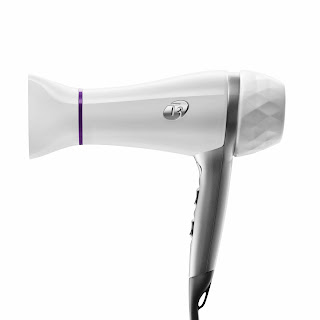We all want to achieve salon looks when we do our own hair,
so it pays to invest in a good quality hairdryer. You will not only get better
results, but it will also last longer.
Most professional hairdryers use AC heavy duty motors. Look
for a hairdryer with a high wattage – the higher it is the more powerful the
hairdryer. It can be difficult fiddling around with a dryer in one hand
and a brush in another, so ensure that it is not too heavy.
You need to control the temperature and airflow. Ideally,
you want at least two speed settings as well as high and low heat options. The
high is good for rough drying your hair. Once you start styling switch to a
lower setting. To avoid burning your scalp and damaging your hair, don’t hold
your dryer too close to your head or hold it in one spot for too long.
A cool shot button is good as it produces a blast of
cold air which helps set the style. A professional dryer tends to generate more
air-flow than consumer hairdryers so hair is dried faster. You need to keep the
filter clean to prevent reduced airflow.
Also look at the nozzle. Narrow nozzles help to concentrate
the heat in one area so you are not disturbing sections that you have already
dried. This is especially important for frizzy hair.
Always dry hair down the hair shaft to ensure that the hair
cuticles lie flat, so you won’t get that fluffy effect.
A diffuser can be good for curly hair, but the downside is
that it can take longer to dry hair.
Buzz words
Ionic, ceramic and tourmaline are words that you often see on the boxes of hairdryers luring you with promises of shiny, healthy tresses.
These technologies have become more popular over recent
years. Often manufactures combine a couple of them.
An ionic function emits negatively charged ions which bathe
the hair, so water molecules can penetrate deep into the hair. Companies claim
this process speeds up the drying process, reduces static electricity and
protects the hair, making it shinier,
smoother and less frizzy.
Ceramic is said to heat more evenly and, therefore, the hair
is not subject to as much heat damage.
Tourmaline technology claims to emit more negative ions than
a normal ionic dryer and is reputed to make the hair less static as it
helps to retain moisture in the hair.
These technologies have often been disparaged by scientists.
In tests carried out, by Which?, it concluded that an ionic function “reduced
microscopic signs of hair damage caused by drying at high temperatures and
speeds, though the same can be achieved by drying on low speed and power.”
These are two hairdryers that I have used and have provided
good results.
Parlux 385 PowerLight 385, £135, hairtools.co.uk
This new light state-of-the art dryer is sure to be another
success for this Italian brand, so beloved by top hairdressers. Thanks to the
new K-Lamination motor the PowerLight is the most powerful model
(2150 watts) to date. It also uses both ionic and ceramic technology and is
eco-friendly as well as being extremely quiet.
The dryer also has four temperature settings and two speeds
and a coldshot button and comes with two concentrator styling nozzles. If you
have frizzy hair, use the narrower nozzle. Comes in a variety of colours.
How it performed
This dryer is superb to use as it is so light, you can
concentrate on working that round brush. My hair also seemed to be dried in no
time at all. I got a great result with this dryer. My hair was so silky and
shiny but, to be honest, from Parlux, I would not have expected any less.
T3
Featherweight 2, £155
If you have locks that are hard to style or don’t want to use the usual high heat, high wind speed type of dryers, then this tourmaline ionic dryer could be for you. The company claims that it is faster than other dryers and that it has been “clinically proven to be better for your hair than air-drying”.
If you have locks that are hard to style or don’t want to use the usual high heat, high wind speed type of dryers, then this tourmaline ionic dryer could be for you. The company claims that it is faster than other dryers and that it has been “clinically proven to be better for your hair than air-drying”.
The dryer
also has two speed settings and three
adjustable heat settings, the medium heat is ideal for fine hair. There is also
a cool shot button. The Advanced SoftAire Technology delivers a greater volume
of air to speed up the drying process. It has a long-life motor – itsT3
Tourmaline infusion process is said to last for the dryer’s life time.
How it
performed
I first
tried the dryer the day before I was due to go the colourist, as my hair is at
its most difficult to blow-dry. The dryer is ultra-light and easy to manoeuvre, but does take getting used to. I
usually rough dry my hair before styling, but with this dryer, it is better to
work on sections from the beginning. Take out any excess moisture by dabbing
hair with a towel.
The drying
process was quick. My hair had plenty of body and was silkier and less frizzy
than it would have been had I
used a basic dryer. Remember it is a hairdryer not a miracle-worker, so if you
have “fluffy” hair you still need to create tension in your hair by styling it
using a good quality round brush.
By Daralyn
Danns



